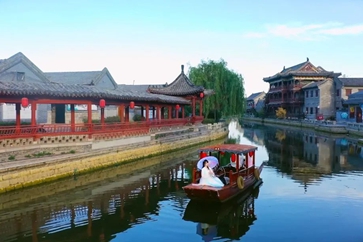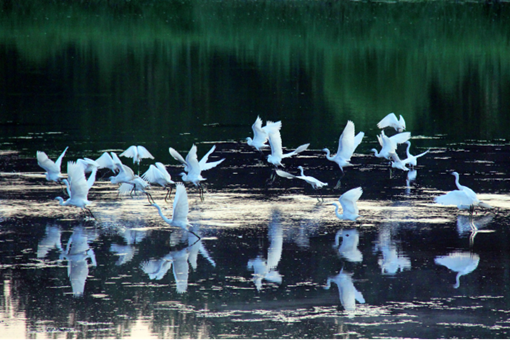Exploring Confucian culture at Nishan in Qufu
Nishan in Qufu, Jining, Shandong, is not just a geographical landmark but a cultural beacon. As the birthplace of Confucius, it holds profound historical and cultural significance.
The site includes the Temple of Confucius and Nishan Academy, both of which have been central to the dissemination of Confucian thought for centuries. The Temple of Confucius, built during the Five Dynasties and Ten Kingdoms (907-960) period, is a testament to the enduring respect for the sage. The Nishan Academy, established in the Yuan Dynasty (1271-1368), has been a place of learning and reflection, where scholars have gathered to study and teach Confucian principles.

The "Nishan Five Rites" mural in the grand lecture hall of Nishan Sacred Land in Qufu depicts key life ceremonies in ancient China: enlightenment at age seven, tributes to teachers, coming-of-age, weddings, and village banquets. [Photo/VCG]
Today, Nishan continues to be a vital cultural hub. It has hosted several editions of the Nishan Forum on World Civilizations, a platform where scholars from different countries and cultures discuss not only the preservation and development of Chinese civilization, but also the coexistence and symbiosis of diverse world civilizations. At this year's 11th edition, it will also focus on the development of human civilization in a world of artificial intelligence.
Additionally, Nishan also supports local development through cultural tourism and educational initiatives, blending tradition with modernity. Projects like the "Confucius classroom" and the "Spring and Autumn Period (770-476 BC) forum" offer immersive experiences that bring Confucian teachings to life. These initiatives not only preserve cultural heritage but also promote its relevance in contemporary society.

 Explore Jining with Confucius through Confucian culture study tours
Explore Jining with Confucius through Confucian culture study tours  Explore Jining's hidden gems this May Day
Explore Jining's hidden gems this May Day  Jining makes efforts to protect, revitalize cultural heritage
Jining makes efforts to protect, revitalize cultural heritage 

